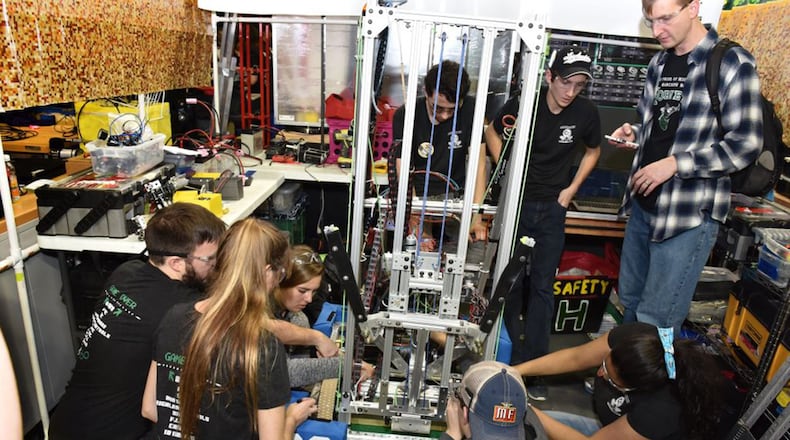“This is the best example of an extracurricular activity where you can get hands-on techniques to use in real-world STEM careers,” said Conor Blackburn, a Winners Circle Robotics team competitor out of Kentucky. “A lot of the things we do in school are focused on learning concepts, but here is where we are actually able to practice techniques and strategies that are used all across the engineering world.”
Teams consist of 30 to 40 high school students from various backgrounds and academic interests. While building the actual robot requires technical expertise, teams also have sub committees that handle fundraising, outreach, and logistics. As students are fine tuning technical prowess, they are also honing their skills in communication, teamwork and leadership.
“Each team is like a small business,” said Katie Dunn, Central Regional director of FIRST Robotics. “They have to solicit donors, find sufficient locations for building and practicing their machines and secure transportation.”
This regional competition runs on a strict schedule and set of rules, and each team has to work together to ensure they meet the requirements and deadline for the event.
“The students have six weeks from the time the competition games and rules are announced to when they bring their finished robots here to compete,” said Dunn. “There are restrictions on height, weight, and even the types of materials they can use to build their machines.”
The teams arrived at the Nutter Center March 1 for check-in, where they unveiled their robots for the first time since the deadline.
“Once the six weeks were up, the teams had to seal their robots, and they weren’t allowed to access them again until they arrived here,” said Dunn. “Some of the teams showed up with machines that were ready to go, and others were still assembling their robots.”
Despite the competitive nature of the event, teams worked together to make sure everyone had a chance to put their hard work to the test and run their robots through the course.
“Nobody likes to see a team that isn’t doing well, so if someone is struggling, they’re going to get help from another team,” said Dunn. “There is a whole community out here.”
Students are getting hands on experience for future careers in all facets of STEM career fields, and many of them spoke of planning to pursue STEM careers after college.
“The Air Force is really promoting STEM projects, and competitions like the FIRST Robotics is just one of the things we are doing to promote STEM fields,” explained Dunn. “These are going to be the kids that really change this world. They are the future of our [Department of Defense] workforce; the ones who are really going to change this world by designing the next aircraft or the next space shuttle.”
The winners of this competition will proceed to Detroit for the world championship competition in April. For more information, visit www.firstinspires.org/robotics/frc.
About the Author
